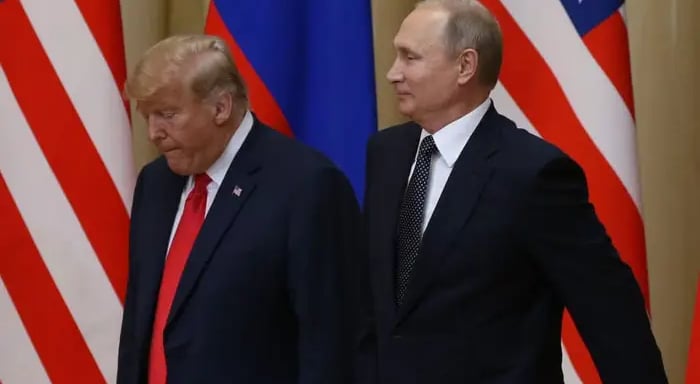Add your promotional text...
Russia Rejects Trump’s Ceasefire Call but Signals Willingness for Peace Talks in Ukraine Conflict
Synopsis: Russia has rejected U.S. President Donald Trump’s call for an immediate ceasefire in Ukraine but remains open to negotiations for a lasting peace deal, signaling potential shifts in the ongoing conflict.
MARKETSGLOBAL
By Alankrita Shukla
12/26/20243 min read


Russia’s Stance on the Ukraine Conflict: Rejecting Ceasefire Proposals and Focusing on Peace Talks
In a recent development, Russia has dismissed a request from U.S. President Donald Trump for an immediate ceasefire in the ongoing war in Ukraine. Despite this, Moscow has indicated its willingness to engage in discussions aimed at securing a lasting peace agreement to end the nearly three-year-long conflict.
Lavrov’s Firm Response to Trump’s Ceasefire Proposal
Russian Foreign Minister Sergei Lavrov, in an online news conference on Thursday, unequivocally rejected the idea of a ceasefire, describing it as a “road to nowhere.” Lavrov argued that such a temporary pause in hostilities would only allow Ukraine to bolster its military position, thus prolonging the conflict. He emphasized that Russia’s approach to ending the war requires concrete and legally binding agreements that safeguard the security interests of the Russian Federation and its neighboring states.
Lavrov’s response reflects Russia’s broader strategy, which has consistently focused on securing strategic goals through negotiation, rather than relying on temporary halts to fighting. Moscow’s demands, however, continue to center on ensuring that Ukraine takes definitive steps that guarantee Russia’s security concerns are addressed.
Shifting Dynamics on the Battlefield
As the conflict continues, Ukraine finds itself in a precarious position, with Russia steadily making territorial advances on the ground. The current situation on the battlefield indicates that Russia controls a significant portion of Ukrainian territory, amounting to nearly 20%. This control has been a critical point of contention, with Russian President Vladimir Putin maintaining that this occupied land remains under Russian influence.
Meanwhile, the Ukrainian government, led by President Volodymyr Zelenskiy, faces mounting pressure as Russian forces continue their gradual push. However, Zelenskiy appears to be showing signs of flexibility, hinting that diplomatic negotiations may be a necessary avenue to reclaim lost territories. This shift in rhetoric suggests a possible change in Ukraine’s approach to the conflict, acknowledging that military operations alone may not bring about the desired outcome.
The NATO Dilemma and Russia’s Red Lines
Beyond the battlefield, Russia has made it clear that one of its primary conditions for peace is that Ukraine abandons its aspirations to join NATO. This issue has been one of the central points of contention since the war began, with Moscow viewing Ukraine’s potential NATO membership as a direct threat to its security. Russia has also insisted on strict limitations regarding the size and capabilities of Ukraine’s military, demands that have been firmly rejected by Kyiv.
Despite these challenges, Russia’s position remains steadfast. Lavrov urged the Trump administration to focus on addressing the root causes of the conflict, hinting that Russia is open to serious, concrete proposals aimed at reaching a peaceful resolution. According to Lavrov, President Putin is prepared to consider any genuine efforts that move beyond superficial ceasefire agreements.
Looking Ahead: The Future of Peace Talks
While the path to a peace agreement remains fraught with difficulties, the signals from Russia suggest a willingness to engage in dialogue. However, the Russian leadership insists that any talks must be built on principles of security, sovereignty, and respect for the territorial integrity of both Russia and its neighbors.
As the conflict continues to evolve, the international community will likely be watching closely to see whether these peace talks can lead to a breakthrough or whether Russia’s demands will ultimately be too great for Ukraine to accept. In the meantime, the situation on the ground remains tense, and any prospects for resolution will depend on how both sides navigate the complex web of geopolitical interests at play.
This evolving scenario highlights the intricacies of modern geopolitics and the high stakes involved in resolving one of the most contentious and destructive conflicts of the 21st century. Whether through diplomacy or continued military engagement, the coming months will likely define the future trajectory of the Ukraine war.
